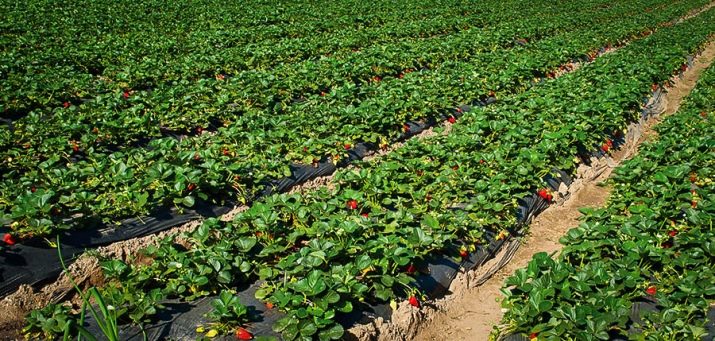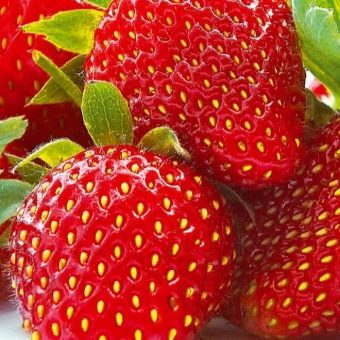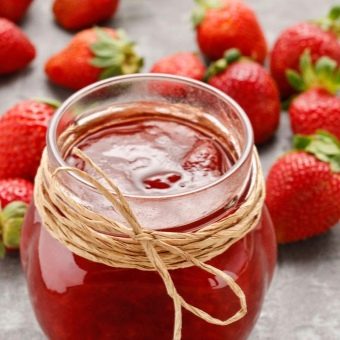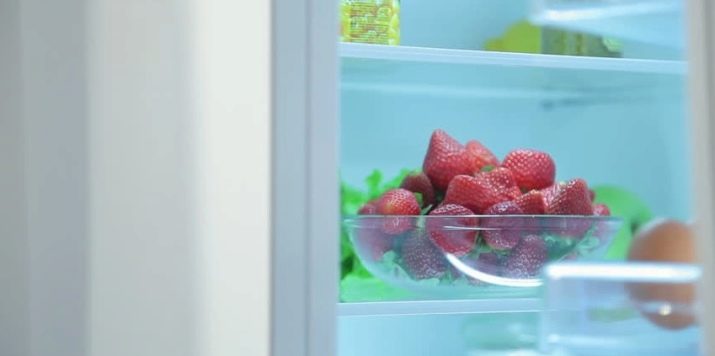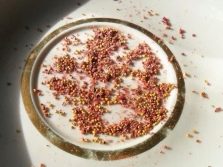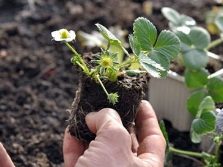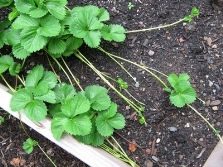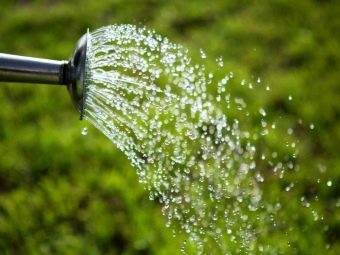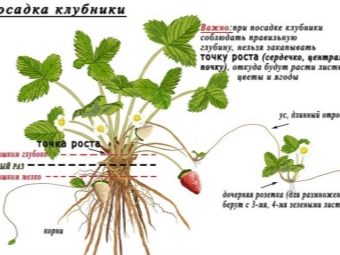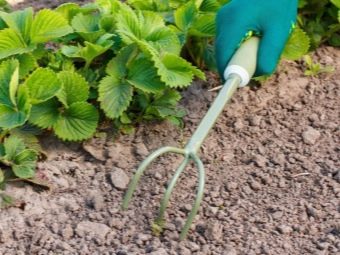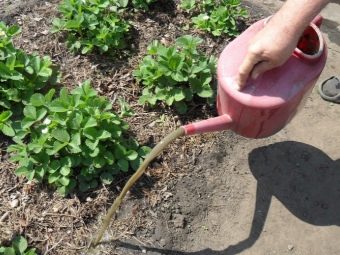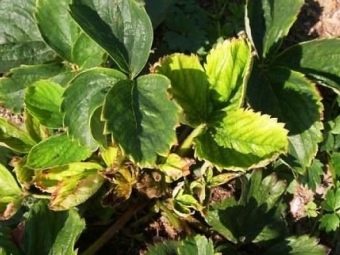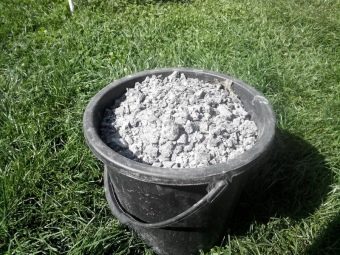Strawberry "Carmen": description of the variety and cultivation
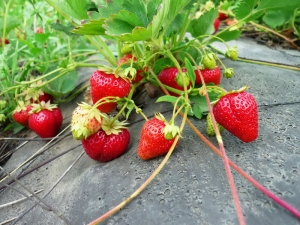
Strawberries are a desirable berry for many gardeners.The main requirement for the plant is its taste. The medium late variety “Carmen” has a wonderful sweet taste, but the culture has other advantages, which is why it is in demand in the middle belt of our country, as well as in its northern regions.
Characteristic
The culture was bred by Czechoslovak breeders and originates from late-ripening strawberries. The carried out varietal testing confirmed the positive qualities of the variety, after which the berry was entered into the state register and became widespread in other countries. The description of the variety is as follows.
- The bushes of the plant are distinguished by straight-growing powerful stems, lush foliage, formed by wide leaves with denticles at the edges. Their surface is dark green and shiny.
- Flowers grouped into inflorescences are saucer-shaped and appear in the second half of June, by the end of the month fruit ovaries form. As a rule, the berries are formed slightly higher or on the same level with the leaves, so they have the opportunity to mature properly under the rays of the sun.
- The peculiarity of fruiting is the large size of the fruit during the first ripening. Each berry of the primary harvest can weigh up to 40 g and has a rich purple color, darkening when overripened. The shape of the berries resembles a regular cone. With subsequent harvests, the fruits become somewhat shallow and their mass does not exceed 18 g.
- Strawberry pulp is very juicy, but dense, leaving a weak sour aftertaste. Inside it is also dark red.
This variety of strawberry can be cultivated for commercial purposes, used fresh, processed for preservation, making jam, jam, jam and stewed fruit, including with the addition of other berries and fruits.
The advantages and disadvantages of culture
The main advantage of the variety "Carmen" is the stability of fruiting and high yield. But there are other positive characteristics of a garden plant:
- quite large fruits;
- sweet aromatic pulp;
- the late period of fruiting, when most crops no longer give berry collection;
- cold resistance, allowing to grow crops in the northern regions;
- immunity to major diseases of the species;
- quick survival during landing;
- possibility of transportation;
- simplicity in the content.
The disadvantage of such strawberries is considered too voluminous structure of the bush, which excludes frequent planting, affecting the appearance of rot at high humidity and reducing the size and weight of fruits after the first fruiting. Reviews of gardeners who grow strawberries on their land for several years, note the wonderful taste and juiciness of this plant's fruits. During the flowering and ripening of berries, the culture is a real decoration of the garden. The special hardness of strawberries, which is not crumpled or damaged during transportation, is considered important.
Houses in the fridge berries can be stored for several days, and this is also a plus. In addition, we are pleased with the high fruitfulness of the bushes, which give good yields from year to year.
How to multiply?
Variety "Carmen" can be propagated in several ways - by dividing the bush, seeds and using stepsons. Since the culture is able to throw out the antennae, it can be grafted on the same bed where it grows. After harvesting, remove all weed plants, carefully loosen the soil, straighten the strawberry shoots, and place the leaflets formed on them into the top layer of soil and water. Already by September or a little later, the shoots give roots, and they can be separated by neatly pruning from the uterine bush. The resulting plant is a complete seedling.
Another way - reproduction by dividing the bush. It is suitable for adult biennial, three year old plants. You can perform this procedure twice - in the spring before the appearance of inflorescences or in the autumn, when the berries are already picked.To do this, dig a bush, cut into three, four parts. It is important that each outlet has at least three leaves and strong roots. It is usually planted in the evening or in the absence of the sun, so that the leaves do not evaporate moisture, and then the plant is shaded until the root system is fully formed.
You can grow strawberries from seeds, of course, they must be of high quality. If the berry is already cultivated, then choose the largest and most ripe fruit and cut off its skin, which is then dried for 3-4 days in the sun. In order to increase the germination of seeds, they are stratified — they put planting material on wet cotton wool, cover it with film and put it in a refrigerator for 4 days. Sowing is best done in early April, organizing additional coverage for the culture.
You can grow seedlings in boxes, containers with a nutrient substrate or special peat washers, in the latter case, the picking procedure will not be required in the future.
Competent landing
A plant with three leaves, intact and without spots, having a bright emerald color, is considered ready for planting. The length of the roots of the seedling should be 7 centimeters or more. Well, if the stalks are not much elongated. It is important to choose a windless light area under the beds, after clearing it of weeds. It is unacceptable to locate plants in the lowlands, since an increased moisture content may result in a gray rot. The soil will need loamy and sandy, they add peat and humus to it, neutralize the strong acidity with lime, and the high alkali content - calcium chloride or phosphogypsum.
In the middle belt, strawberries "Carmen" are planted, starting in the second half of May and before the beginning of September. The landing features are:
- fertilization is carried out two months before planting;
- the soil must be pre-moistened;
- landing holes are placed 50 cm apart, leaving a distance of 45 cm between the rows;
- seedlings are lowered into the hole carefully, without bending, you can not press the roots to the bottom of the hole;
- after piling earth with soil compacted and watered.
Densely planting plants is not recommended, because this arrangement has a negative impact on culture. The result can be the grinding of fruits, the development of diseases and the defeat of slugs.
Care rules
With proper culture, it is able to please the gardener with regular high yields. Young seedlings already 2-3 years after planting begin to actively bear fruit. Necessary activities include the following steps.
- Daily watering in the morning. The water should be warm, ideally rain, but suitable and separated. Many gardeners recommend organizing an automatic drip irrigation system.
- In the flowering period, in order to increase the quality and quantity of flowers, it is necessary to apply organic fertilizers - rotted manure, chicken manure. Some experts in this field recommend using boric acid solution. One square meter will require about 30 g of nutrients.
- With the onset of flowering, you should pay attention to the fact that the land under the strawberry bushes always remain hydrated. The way out can be regular loosening and irrigation, as well as mulching with straw, peat, sawdust to retain moisture.
- Breaking off the first flower stalks is also an obligatory procedure, as it allows stimulating the growth and development of weak bushes, water-soluble fertilizers made by the foliar path will help in this - the leaves of the plant should be moistened.
- On the eve of winter, the culture must be prepared, covering the bushes with pine spruce branches, foliage or a straw, coconut substrate.
Methods of dealing with insects and diseases
This strawberry variety has several enemies that can damage a crop and cause its death.
- With the defeat of the tick, due to the drying of the leaves, the growth of the bushes slows down a lot, it can be helped by watering the ground with hot water at a distance of a meter from the leaves or spraying with drugs such as Neoron and Fufanon.
- The strawberry-raspberry weevil is also dangerous for the plant; as a result of the lesion, non-viable buds form or the plant does not bloom. To get rid of the pest, you can spray the bushes with infusion of wood ash or mustard, destroy dead leaves, or use the insecticide "Aktellik".
- The leaf beetle is able to devour strawberry leaves, a particular danger is the large number of these insects. Against them effectively use a decoction of wormwood or "Fufanon" for spraying.
- Slugs that appear due to thick planting and moisture are another nuisance that gardeners may encounter when cultivating Carmen strawberries. It is a parasitic mollusc that loves to “indulge” in the majority of vegetables and berries growing in the garden. The pest is omnivorous, eats leaves and fruits of strawberries. You can eliminate it with the help of “Metal hydride”, a blend of bleach with wood ash, and freshly sour lime.
- It produces leaves, flowers and such a pest as a nematode. In such a situation, it is necessary to remove the affected plant from the bed.
In addition, strawberries are subject to certain diseases.
- Gray rot causes on the fruits the appearance of brown spots with a repulsive odor, which later become covered with a gray bloom. Exit - the collection and destruction of diseased berries.
- Verticilous wiltingprovoked by fungus. The plant is infected through the soil and is expressed in the withering and drying of the bush. In this case, it is better to destroy and burn the affected bush.
If the care is good, the strawberries “Carmen” can rejoice with crops up to 4-5 years, after that the bushes writh, in advance forming beds with new seedlings. This is necessary because of the accumulation of diseases by old plants.
On how to plant strawberries, see the following video.

